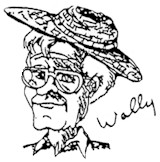 That would be a useless, cracked, mossy, stained, nasty-looking concrete pad, about 22 feet on a side, that the former owners put in for their kids to play basketball on. Right in front of the house. Our kids never played basketball on it, so there it sat. But take it out? "No, Mom," they'd say. "Don't take it out. We could have a garage sale there."
That would be a useless, cracked, mossy, stained, nasty-looking concrete pad, about 22 feet on a side, that the former owners put in for their kids to play basketball on. Right in front of the house. Our kids never played basketball on it, so there it sat. But take it out? "No, Mom," they'd say. "Don't take it out. We could have a garage sale there."Said garage sale never materialized, and the concrete kept getting uglier and uglier, with more cracks and more moss. Well, the moss was an improvement, really. At least it was green in the winter.
The kids are out of the house and I've lived with this monstrosity for too many years now. The poor "Hobbit tree" is dead and needs to come down, so with the promise of no shade on that part of the yard, and with sunny bits at a premium, it was time. Past time really, but time to do something a bit more organic with the spot.
So last Monday the concrete guys came with a big noisy machine and took away all the concrete. Now look at it!
 Errr... ummm... it's, uh, dirt. Nice... well, not even nice dirt. Sticky red clay. But NO CONCRETE! Yaaay! There wasn't even a bed of gravel under it (which was probably one reason that it didn't hold up). I tried loosening the soil up with a digging fork, but while the soil was pretty soft to begin with, since we had a good rain this week, all it did was ball up in a sticky mass on the digging fork and on the bottoms of my feet. Ah, takes me back to my youth, growing up on a Christmas tree farm on a hill made almost entirely of red clay that stuck to our rubber boots until we looked like we were wearing basketballs. I sowed the whole thing with gypsum and called it good. At least that should prevent hardpan from forming.
Errr... ummm... it's, uh, dirt. Nice... well, not even nice dirt. Sticky red clay. But NO CONCRETE! Yaaay! There wasn't even a bed of gravel under it (which was probably one reason that it didn't hold up). I tried loosening the soil up with a digging fork, but while the soil was pretty soft to begin with, since we had a good rain this week, all it did was ball up in a sticky mass on the digging fork and on the bottoms of my feet. Ah, takes me back to my youth, growing up on a Christmas tree farm on a hill made almost entirely of red clay that stuck to our rubber boots until we looked like we were wearing basketballs. I sowed the whole thing with gypsum and called it good. At least that should prevent hardpan from forming.Next weekend the barkdust company across town is bringing in a load of topsoil. That I'll spread, pile into beds, and have me a raised bed garden. And THAT will finally be an improvement.







